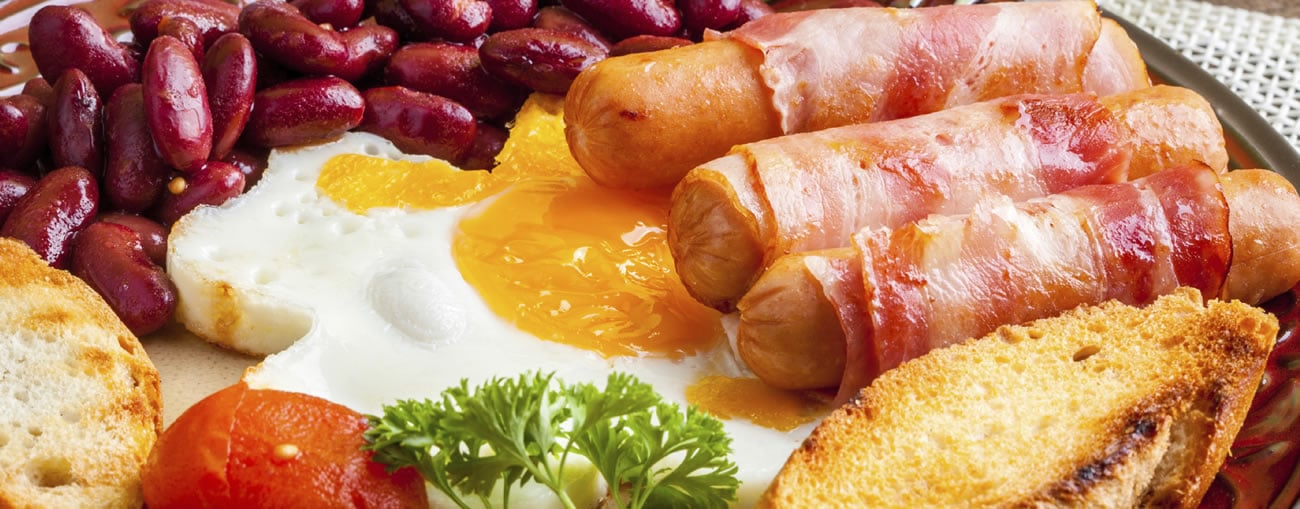Stop Fearing Fat?
White potatoes are in the same “bad for you” category as processed meats and refined sugars? Is this not evidence of cluelessness?

In their “Stop Fearing Fat” essay in The New York Times (titled in some editions “Why Is the Government Afraid of Fat?”), Drs. Mozaffarian and Ludwig are correct in their assertion that low-fat foods can be harmful. We all remember, for example, SnackWell’s cookies that were free of fat but full of sugar and other refined carbohydrates.
And the authors are correct when they state that our emphasis should be, not fat or carbohydrates, but rather food – whole or minimally processed food.
Also correct is their assertion that how much we eat is determined “by what we eat: Cutting calories without improving food quality rarely produces long-term weight loss.”
What Makes Foods Fattening
But Drs. Mozaffarian and Ludwig fail to mention what it is about the foods we eat that impacts how much we eat, how satisfied we feel, and how many calories we take in.
As we teach every day at the Pritikin Longevity Center, foods that provide little satiety per calorie are fattening. These foods are typically:
- Calorie-dense foods (dry and/or fatty foods)
- Beverages with calories
- Foods with little or no fiber, and
- Foods eaten when not hungry
Because the authors of this New York Times essay do not seem to understand that it is these four basic characteristics that promote overeating and weight gain, their recommendations are incoherent.
Here is one key example. Drs. Mozaffarian and Ludwig state:
”This is not to say that high-fat diets are always healthy, or low-fat diets always harmful. But rather than focusing on total fat or other numbers on the back of the package, the emphasis should be on eating more minimally processed fruits, nuts, vegetables, beans, fish, yogurt, vegetable oils and whole grains in place of refined grains, white potatoes, added sugars and processed meats.”
Blue Zones
The first sentence of the above paragraph is correct. When you look at the populations throughout the world who live both long and well, popularized recently as countries that are the “Blue Zones,” the percentage of calories from fat was not predictive of longevity. True, some Blue Zoners, like the people of Okinawa, lived long on a very low-fat diet, but others lived long on diets far higher in fat.
Seven Countries Study
Similarly, in his landmark Seven Countries Study in the 1950s, Ancel Keys showed that both Crete and Japan had low death rates from heart disease; yet Crete’s diet was nearly 40% fat while Japan’s was about 10% fat.
Fats To Fear
Put simply, percentage of calories from fat is not a good focus for reducing coronary heart disease. Heart disease is much more closely linked to the amount of saturated and trans fatty acids and cholesterol in the diet.
Also promoting cardiovascular disease are diets that provide little satiety per calorie, little fiber and other phytochemicals, and too much salt.
Drs. Mozaffarian and Ludwig are also right about eating more minimally processed fruits, vegetables, and beans.
But where is the evidence that eating more yogurt (note that they did not say “fat-free yogurt”) and fish will reduce elevated serum [blood] cholesterol?
It is foods that are high in saturated fat and trans fats (yes, these are fats we should definitely fear) and/or dietary cholesterol that raise serum cholesterol levels and promote atherosclerosis. Do the authors of this essay not know this?
Calorie-Dense Foods To Fear
Moreover, nuts and vegetable oils are very calorie dense. As discussed earlier, calorie-dense foods provide little satiety per calorie. When we eat just a handful of peanuts, for example, it’s hardly enough to fill us up, but we’ve likely downed about 400 calories. Do the authors not know this?
Vegetable Oils To Fear
And don’t they understand that there are vegetable oils, namely coconut, palm, and palm kernel oils, that are full of artery-clogging saturated fat? Are these vegetable oils better nutritionally than refined grains and sugars? The authors of this essay would have you thinking so.
Potatoes
And finally, white potatoes are worse than vegetable oils and full-fat yogurt? White potatoes are in the same bad category as processed meats and refined sugars?
Is this not evidence of cluelessness?
Where were all the obese, Irish people with clogged-up arteries and type 2 diabetes in the 19th century when 80 to 90% of their total calories were coming from those dreaded white potatoes?
If anything, whole, white potatoes are preferable nutritionally to whole grains. They have a higher fiber-per-calorie ratio and more potassium. This is not to say that fast food French fries or Pringles are healthier than oatmeal or brown rice. But a plain, baked potato is preferable to whole-wheat bread (which is usually loaded with salt and is far more calorie dense).

The Fattening of Asia
And finally, what do Drs. Mozaffarian and Ludwig think is causing so many people in increasingly affluent countries in Asia today to be getting fatter, developing type 2 diabetes, and having higher serum cholesterol levels as they cut back on rice (most of it refined), yams, and potatoes, and eat more dairy, eggs, poultry, red meat, and seafood, often fried in vegetable oils (including tropical oils)?
In Asia, in effect, we are now seeing dietary fat, saturated fat, and cholesterol intake increasing dramatically, and the intake of starchy foods declining.
Could eating fewer starchy foods and more fat and animal products be bad for Asians but good for Americans? Hardly.
Bottom Line
For heart-health, we should never stop fearing certain fats – saturated fats and trans fats, as well as dietary cholesterol.
For long-term weight control, we should also fear foods that provide little satiety per calorie, and they run the gamut from soft drinks to chips to cheese. Some are fatty. Some are not.
But all are fattening.